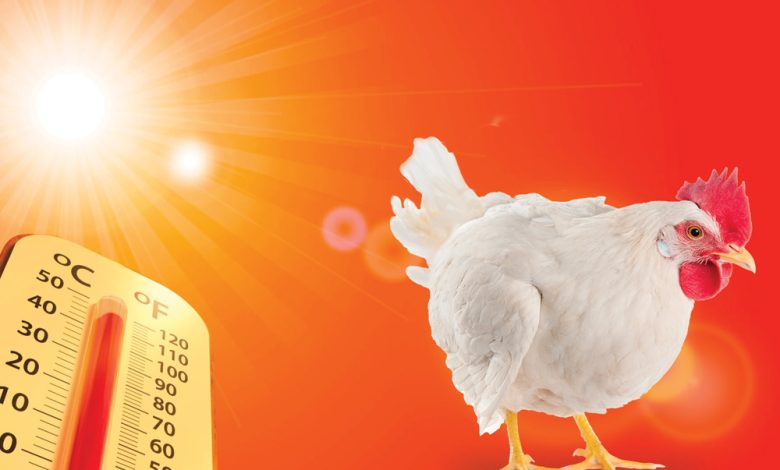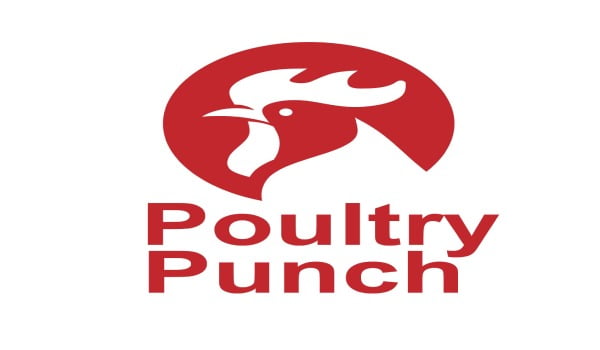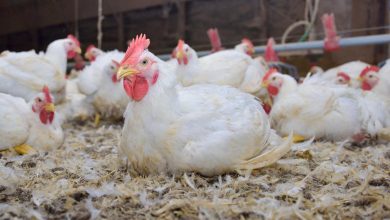HEAT STRESS MANAGEMENT IN POULTRY FARMS

“BEATING THE HEAT” – HEAT STRESS MANAGEMENT IN POULTRY FARMS
MAIYARASU AND K. SHIBI THOMAS,
Livestock Farm Complex,
Veterinary College and Research Institute,
Orathanadu-614 625
Tamil Nadu Veterinary and Animal Sciences University (TANUVAS)
Heat stress is a worldwide problem in poultry production, especially in broiler and layer lines. Heat stress begins when the ambient temperature climbs above 80oF and is readily apparent above 85oF.
Mechanism of heat dissipation/Thermoregulation
Since birds lack sweat glands and have a thick layer of feathers, it is difficult for them to regulate their body temperature. The main process for birds to thermo-regulate when subjected to high temperatures is panting.
Panting is the first sign of increasing temperature, birds begin to cool their air sacs by contact with the air and the humidity in the bags. As the frequency of panting increases, chances of dehydration increase too. Other methods to dissipate heat are opening of feathers to expose more skin surface and increased water consumption to increase the moisture content in the faeces.
Symptoms of birds affected by heat stress
Initially, the most common sign is that birds, while trying to recover their thermal balance, modify their behavior, and we can observe
- Birds with distended wings
- Crouched on the floor
- Slowness, lethargy
- Stupor, wobbles
- wet faeces
- Increase in water consumption
- Decrease in feed consumption
- Birds begin with slow gasps and end up panting very quickly
- Deviation of blood from internal organs to the skin, which obscures the color of the skin
- Terminal seizures
- Increase in mortality
Steps to combat Heat stress in poultry farming in summer:
- Housing management
- Water management
- Feed management
- General management
Housing management
Orientation of the poultry house in the east west direction to minimize the direct assess to the sunlight. Good roof insulation with support of foggers and cooler systems in poultry house present in the tropics. Increased air movement over the birds by cooler fans / exhaust to produce wind chill effect which will cool birds. Thatching of roof with paddy straw or sugar cane leaves will reduce temperature inside the shed. The roof should be painted with white wash to reflect light. Shades from tall trees and plantation around the sheds can reduce the radiant heat. In open sided houses, width of house will be a limiting factor so keep the optimum width (24-32 ft) based on temperature, humidity and wind velocity, type of house and nature of bird for effective cross ventilation. Roof overhangs should be sufficient (3-5 ft) to protect the birds from strong sunrays.
Water management
The most important criteria of these four managemental factors during summer is water management. In summer waterconsumption is 3-4 times more. Supply of plenty of clean and cool water (60-700F) must be ensured during summer months. For day old chicks provide cool water and electrolytes on their arrival to farm before offering feed to avoid dehydration after transportation.Increase number of waterers by 25%.Increase frequency of watering. Addition of 0.25% of salt to drinking water increases water consumption. Adjust the amounts of medications and volumes of water used for water vaccination to reflect the increase water consumption of the flock during hot weather.
Feed management
During summer consumption of feed by birds is reduced considerably leading to reduced body weight, egg production and shell quality.Increase the frequency of feeding. Do not offer feed during day time in broilers.Increase nutrient density of feed to compensate for depressed feed intake. 20-30% extra vitamins and trace minerals should be added to feed. Available phosphorus content of feed should be increased. Vitamin C is necessary to maintain integrity of blood vessels. Supplementation of vitamin C is beneficial. 200-500 gm/ton feed will be beneficial. Pelleted feeding is beneficial where low energy fiber diets are used. Add soda-bicarbonate @ 0.1% for improvement of shell quality. The diet should be balanced with limiting amino-acids, methionine and lysine which will give better results. Increase the calcium level from 3-3.5% in layer diet.
General management
Litter preferably fresh litter of 2 inches thickness with racking or stirring of litter 2-3 times a day during cool hours is recommended. 10% extra floor space should be provided in summer. Overcrowding of birds should be avoided. Shifting, transportation, de-beaking and vaccination should be done during night or cool hours of the day. Provide proper cross ventilation. Use foggers in the shed which could reduce the shed temperature up to 5-10oC depending upon quality. Use of paint, white lime etc, practically reduces the shed temperature up to 2oC. Use sprinklers on the top or inside shed.Surround the house with tall trees. Thatched roof is suitable for hot areas.
Prevention of heat stress in poultry:
Well located and well laid out poultry farms, with trees and lawns around and getting good breeze will have lesser problems in summer season. In addition, roof insulation plus increased ventilation by fans would help to withstand moderate hot weather. In extremely hot weather, the above measures are not sufficient and evaporative cooling systems – sprinklers, foggers or pad colling are necessary. These systems work very well especially if relative humidity is low and temperature inside houses can be brought down 10 to 15oC. Use of fans without evaporative cooling systems may be harmful in extreme hot weather since it is only hot air that is blown in to the house.




